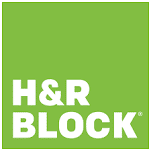If you’re in your 20s, you’re reading this article, and are serious about investing, you rock.
If you actually set out to invest money while you’re in your 20s, and you do it on a regular basis, do you know what your retirement will look like?
In one word: awesome!
Over years, I’ve made some great investments, and some poor ones. Learn from me. I’ve been there done that.
But here’s the scary thing…..
I majored in finance and, even still, upon graduation I knew little about investing.
If it wasn’t for me stumbling into becoming a financial advisor I’m not confident I would have started investing in my 20s.
In fact, many of my friends didn’t.
I kept hearing the same lame excuses “I’ll wait till later” or “I don’t have enough to invest right now” or “I don’t know where to start”. Well check out some of our great reviews for tips on investing such as our Motif Investing Review or our Lending Club Review.

If you’re reading this post, you can no longer hide behind any of these excuses.
It’s time to get started before regret sucker punches you in the financial gut.
Let’s take a look at how to invest in your 20s, shall we?
Before You Invest in Your 20s
If you’re in your 20s, and you’re wanting to invest, you’re thinking in the right direction.
However, you may have some other financial obstacles to overcome before you start investing. That is, you should overcome certain financial obstacles before you start investing!
I went into some detail regarding my financial planning steps here. But let’s summarize some of the key goals you should accomplish before you start investing your dough.
And hey, if you haven’t accomplished these goals yet, don’t fret. You’re not alone. You’re in your 20s! What do you expect?
Your Freedom Fund
Common financial advice suggests you have an “emergency fund” or a “rainy day fund”.
A freedom fund is essentially the same thing I just want to think of it differently.
Why call it a freedom fund?
Because having cash reserves gives you the freedom to take a much-needed vacation if you’re overworked and stressed from your job.
It gives you the freedom to look for a new job if you have a horrible boss that doesn’t treat you with respect or value your contributions.
It gives you the freedom to move if you hate your home or city and want to press the reset button and try living somewhere.
There’s power in freedom and that’s exactly what a freedom fund offers.
Listen, if you have an emergency, one of the last places you want to take money from to pay for emergency expenses is your investment accounts – especially if they’re in a slump.
When you invest, you should invest for the long-term. Think years. Don’t assume you won’t need money in the next month or two for an emergency.
You know, often emergencies don’t warn folks of their arrival dates. They just happen – and they can happen at the worst possible times.
So, before you begin, get your freedom fund in place. Shoot for eight months worth of expenses.
Debt
This is a biggie. Do you have car loans? Student loans? Homing pigeon loans? Pay them off!
Debt, in many ways, is like the anti-investment with a twist. It’s designed so that you will pay.
It’s not that you might pay. You will pay. Investments go up and down, but debt always digs a hole (at the very least what you owe, and many times with interest).
The good news is that paying off student loans, or car loans or whatever kind of loan you have is a lot like making an investment with a guaranteed return. You can rest assured that when you pay off some debt, you won’t have to pay interest on that money anymore. Isn’t that beautiful?
Student loans are a big topic lately. I met with a college grad who got all his student loans with cosigner parents. He was amazingly worried, but when we looked at his overall debt he got his plan in action and paid them off.
Hint: There are some tips later in this article to help you find the cash to accomplish these goals. But if you can’t wait, take a look at our SoFi review.
Now’s the Time to Invest (No, Really Do)
Once you accomplished the above goals, you have some sound money management skills in place, and you have some money to invest, it’s time to invest, my friend!
And, I ask that you really do. Don’t just read this article and go, “Oh, that’s nice. I’ll get to it someday.” No! Actually, invest.
Imagine for a moment you see a shadowy figure on the horizon. They’re making their way to you. You squint. You do a double take. It’s you at age 65.
“Don’t be stupid,” says your future self. “Invest now, while you have time on your hands.”
You see the look of regret written on your wrinkly face. You don’t want to be that person.
Listen to your future self. You need to save for the future. Thankfully, I’m going to show you how.
How to Invest in Your 20s
If you’re just starting out investing, you may not have enough money to invest with an investment advisor face to face. That’s okay. I’m going to show you what to do.
Objective 1: Determine How Much You Need for Retirement
The first objective is to determine how much you need to invest for retirement. There are a variety of factors that go into this equation, including but not limited to:
- Expected income over time
- Expected contributions over time
- Expected tax rates over time
- Expected market returns
- Expected expenses in retirement
The list goes on and on, my friend. If you can afford it, sit down with a financial planner or financial advisor and ask them what they think you should invest on a regular basis. It’s worth it to pay someone to figure out this figure for you.
Objective 2: Figure Out How You Can Save for Retirement
The second objective is to figure out how you can actually save for retirement. It seems obvious, but unless you have some money rolling in, you’re not going to get anywhere when it comes to saving for retirement – unless you land an inheritance or win the lottery, but let’s not place our bets there.
When you’re in your 20s, you’re probably not making much money. Perhaps you have a minimum wage job and you’re working on developing your skills for a career. Maybe you’re in your late 20s and have already started your career, but you’re awfully busy and your responsibilities have you living paycheck to paycheck.
Where in the world are you going to find this money for saving for retirement?
Well, there are really only two realistic options: cutting your expenses or raising your income. Let’s explore both.
Cutting Your Expenses
If you’re not on a budget, you’re probably wasting a lot of money. Listen, only millionaires and the like can afford to forgo a budget, and even then they are probably wasting a ton of dough.
So, if you don’t have a budget in place yet, let me give you a few recommendations . . . .
- First, take a look at some of the best (and free) online budgeting tools. Experiment with some of them. See what works for you.
- Second, take a look at some of the reasons some budgets suck. As you work your newfound budget, make sure you avoid some of these characteristics that make for horrible budgets. You don’t have to learn the hard way if you do a little research to get this right in the first place.
- Third, consider doing some tactical budgeting. This is extreme budgeting, and it will help you be more strategic when it comes to cutting expenses and analyzing your situation.
If you have cut your expenses down to the essentials, it’s time to look at raising your income.
Raising Your Income
In order to invest more money for retirement, you might have to raise your income. The beauty about investing in your 20s is that you don’t have to shovel a lot of money toward the future, because of a wonderful thing called “compound interest.”
So remember, earning even just a few hundred dollars extra every month and turning around and investing the money can result in a healthy retirement portfolio down the road.
Here are a few recommendations for raising your income . . . .
First, take a look at some side hobbies that can actually make you money. Many of these can be accomplished in your spare time, and if you already enjoy these hobbies, why not do them and make a little side money at the same time?
Second, discover some passive income ideas to put your earnings on autopilot. Passive investing is a fantastic idea. Why? Because it means you work once and earn forever – well, at least for a long period of time. Many jobs require you to work and get paid, work and get paid. Passive income means work and get paid, get paid, and get paid again.
Third, check out my slew of ideas to make money fast. You know, if you’re in a pinch, you’re going to need to make a lot of money very quickly to start building the foundation you need to invest in your 20s. That’s why I recommend trying out some methods to make money very quickly. Some of them might not be sustainable in the long-term, but they’ll help you get the immediate job done.
Objective 3: Choose a method for actually investing.
In a few moments, you’ll read about where to invest your money in your 20s. But before we get to that, let’s take a look at a few methods you can use to invest.
There are three main methods . . . .
Method 1: Invest a lump sum.
If you have a bunch of money saved up already, you might want to simply invest a lump sum. That’s cool! Some people simply invest their stash of cash all at one time. Others decide to take that lump sum and spread it out a bit over a few months or years.
The latter option is smart because it will allow you to take advantage of dollar-cost averaging (so you buy at more of an average price per share rather than a potentially high price).
Method 2: Invest automatically.
This is probably the best and most doable method for most in their 20s. Once you’ve figured out how much you should and can invest, you can simply have that amount go directly from your bank account to your investment institution of choice. Set it up and don’t worry about it! Many times you can increase this amount over time as you get new jobs and pay raises. Before you know it, you could be investing 5000 dollars or more a year without even feeling it.
Method 3: Invest manually.
This method is nice for those who want to throw most of their extra dough into investments. Say, for example, most months you can invest around $100, but this month you can invest $250. Manual investing allows you to adjust your investing based on your actual circumstances.
Where to Invest in Your 20s
Next, you’re going to have to determine where you’re actually going to invest your money.
Roth IRA Options
I recommend using a Roth IRA. I love the Roth IRA. Why? Because if you expect to pay a higher tax rate in the future than you do now, the Roth IRA can help you pay taxes on your investments now so you don’t have to pay taxes when it comes time to withdraw from your investment account.
Seriously, consider the Roth IRA.
Now, there are a few ways you can invest using a Roth IRA (or a personal investment account if you already have retirement covered). Let’s take a look at some of your options . . . .
Betterment
Betterment is a great choice if you want to automate the investment process.
Betterment uses ETFs, known for their low fees and flexibility, to invest your money. Betterment helps you diversify your investments and professionally manages your portfolio using preprogrammed software designed to help you reach your investment goals.
One of the nice things about Betterment is their low fees. And, the more you invest, the more you save in fees. You can start out with fees as low as 0.35% annually and work your way down to paying as little as 0.15% annually (see Betterment’s pricing for details).
Learn more about Betterment at our review of Betterment.com Page.
Lending Club
If you want to try something unique, give Lending Club a shot. Instead of investing your money in stocks and bonds, with Lending Club, you’ll be investing in notes.
That’s right, you’ll be lending money to others who need it – and making a profit. You can find quality borrowers through Lending Club and make some solid returns.
Best of all? You can use a Roth IRA with Lending Club. Didn’t expect that, did you?
If you want to learn more about Lending Club, read my Lending Club review for investors.
Wealthfront
Wealthfront is another asset management service that aims to grow your dough.
Like Betterment, Wealthfront uses ETFs to ensure low fees and flexibility. You can automate your investing process with Wealthfront and get on the right track to increase your chances of reaching your goals – retirement or otherwise.
One feature that differentiates Wealthfront from Betterment is that they will manage your first $10,000 free of charge. That’s huge, especially when you’re in your 20s and are just starting out investing. After that, you’ll pay a low 0.25% annual advisory fee (see Wealthfront’s pricing for details).
Congratulations!
If you’re in your 20s and finished reading this article, bravo!
But it’s not enough to have read this article, follow the advice. Don’t become one of those 65-year-olds who regret not investing in their 20s. Now go and invest!
Please note this article may contain affiliate links that, when clicked, result in me earning a commission.
The post How to Invest in Your 20s appeared first on Good Financial Cents.
Source Good Financial Cents https://ift.tt/2w3hWiZ









 Before I unpack all Realty Mogul has to offer, here is a quick rundown of their services.
Before I unpack all Realty Mogul has to offer, here is a quick rundown of their services. Before we dive into reviewing the service you’ll get with Blooom, here are a few key considerations about working with them:
Before we dive into reviewing the service you’ll get with Blooom, here are a few key considerations about working with them:

